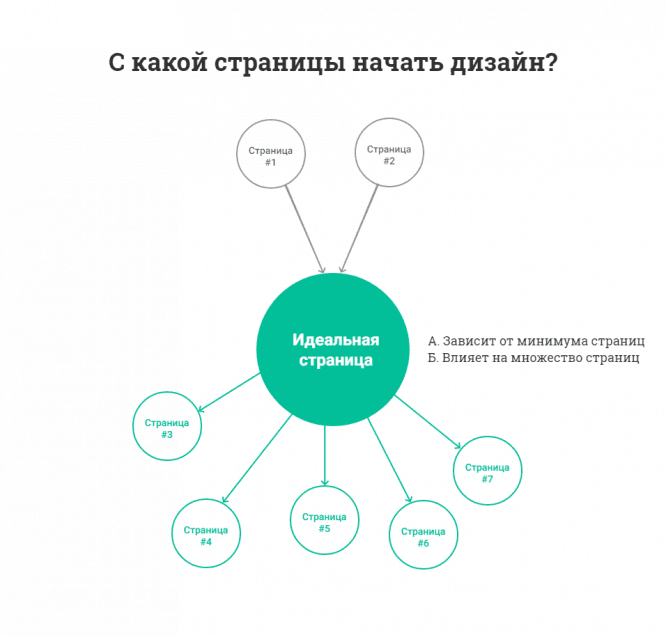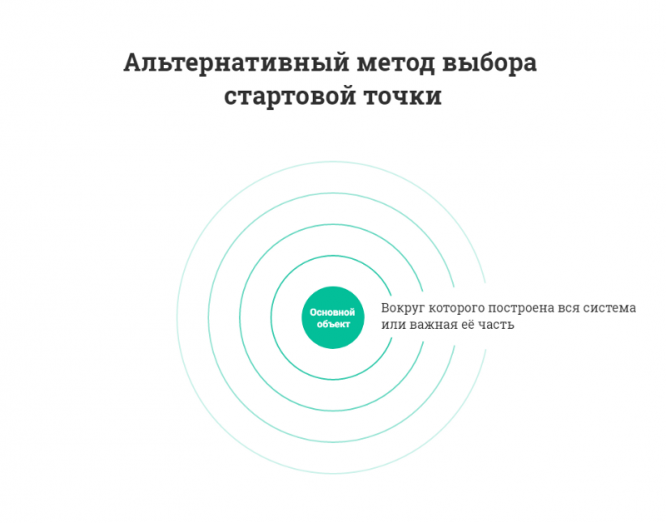Where to start a design and why shouldn’t you start from the beginning?
Where to start a design and why shouldn’t you start from the beginning?
No, this article is not for those who just decided to do design. There won’t even be a list of Mastrid Books.
This note is intended to help planners and designers solve the problem of choosing a starting point when creating prototypes or mock-ups.

Symptoms
As a designer, I faced the same problem from project to project: I didn’t know where to start drawing prototypes. From the outside, this may seem a completely non-trivial task, and if it is also a very interesting project – even more so. Surely, you have already managed to think through everything in a few days, down to error messages, but when Akshur is already open and a new file has been created … Nothing happens!
Most likely, an inexperienced designer at this stage will fall into procrastination: for an hour, for a day, or even for a week (and this has happened). So where do you start?
No, not from analytics
Let’s agree right away that on our conditional project, the analytics stage is already behind. In the best case, as artifacts we will have a full-fledged analytics and an approved architecture, because with such a set of documents, the problems described above should not arise at all, but in the realities of outsourcing, most often we only get a brief from the customer, drawn up by people who definitely do not understand the meaning of the word “ design”. But! Even in such a situation, you can work and achieve a good result (I hope I will not be expelled from the Guild for these wordsиль).
No, not at first
Phrases like “When you don’t know where to start, it’s best to start from the beginning” is suitable for motivational lectures, but not for design methodology. The two worst anti-examples that I really came across are when I started to design from the Home page (store) or Dashboard (CRM), and in both cases, nothing resembling a pre-thought out architecture was even close. This is because these pages are usually at the top of their navigation lists.
Why are they not suitable as starting points? Both pages are a little more than completely dependent on the design of other pages, for most often they are collective summaries.
The above examples fully disclose the most universal way to build a design sequence that I have found since the moment I discovered this problem – the search for objects / pages that strongly affect others, and, at the same time, are minimally dependent on them.

Most likely, the method will seem very obvious to an experienced designer, because it is. I started using the described algorithm long before I realized it myself, but converting the process from subconscious to conscious makes it much more effective.
When should you use this method?
Never. Being universal for all cases, the proposed solution will often not be the most effective.
The better you know your product, the requirements for it and the resources available, the more likely you are to find a much more effective solution than what I have described here.
For example, if this is a profit-oriented product that is already working, the first thing to do is to deal with pages and processes based on business goals. But when it comes to development in conditions of strictly limited resources, you should look first of all at the price / benefit ratio, and so on.
The second universal method …
… which usually leads to the same result as the first, but allows you to look at it from a different angle.
First of all, you need to determine the key object / entity (there may be several of them), around which the entire system will be built. For example, for an online store, such an object will be a product, therefore, it is worth starting the design with a product card (page), then a mini-card (block), then catalogs, and so on.

Outcome
I advise interface designers to raise their design skills first, because the question in the title appears primarily from a lack of understanding of what you are working with.
But even if this question is still relevant for you, feel free to use the proposed methods, because the main thing is that the ice between you and the project breaks down, gentlemen, designers, designers.
Cover photo: ShutterStock
Source: designpub.ru
…



